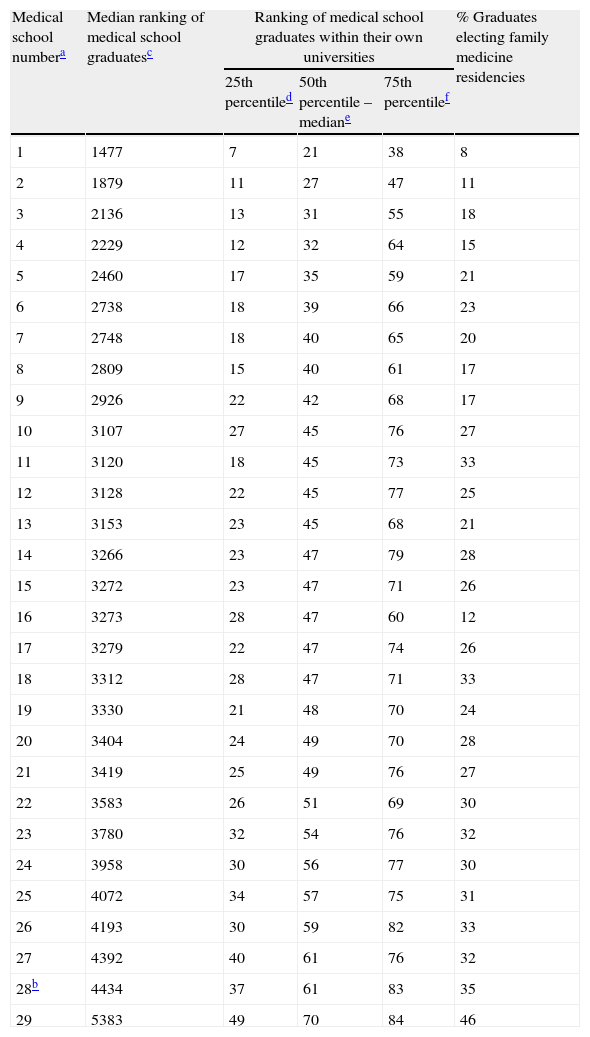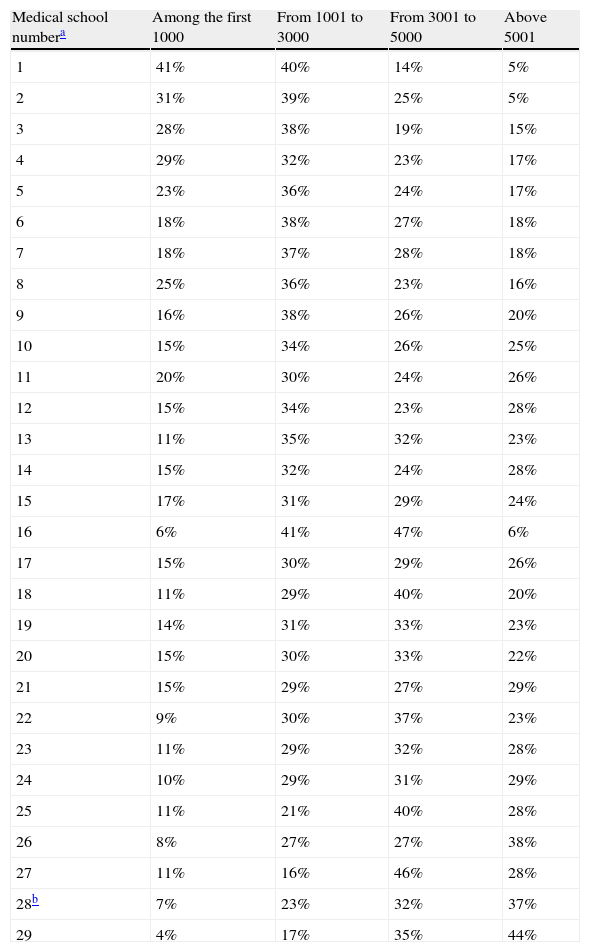Medical school graduates in Spain must take a uniform national exam (called “examen MIR”) in order to enter postgraduate training in a specialty. Its results offer a unique opportunity to rank medical schools according to this exam.
ObjectivesWe measured differences in the MIR exam results among Spanish medical schools and assessed the stability of the MIR-based rankings for the period 2003–2011.
ResultsIn the year 2011 a total of 6873 residency positions nationwide were offered by the Spanish Ministry of Health, Social Services and Equality. These positions covered 47 specialties distributed over 231 training centers. A total of 11,550 medical graduates (including 1997 foreign graduates) took the MIR examination. Marked differences among medical schools were evident. The median graduate from medical school #1 and #29 occupied the positions 1477 and 5383, respectively. These figures correspond to a standardized ranking of 21 out of 100 for medical school #1 (that is, 1477/6873; half of medical school #1 obtained better [below position 21%] and half worse [over position 21%] results) and a standardized ranking of 70 out of 100 for medical school #29. While 81% of the medical school #1 graduates were amongst the best 3000 MIR exams and only 5% above the 5000 position the corresponding figures for medical school #29 graduates were 21% and 44%, respectively. The ranking position of the 29 medical schools was very stable between the years 2003 and 2011.
ConclusionThere are marked differences in medical schools in Spain and these differences are very consistent over the years 2003–2011.
En España, los graduados de las Facultades de Medicina deben tomar someterse a nacional uniforme (llamado «MIR») con el fin de ingresar a la formación de posgrado en una especialidad médica. Sus resultados ofrecen una oportunidad única para clasificar las Facultades en términos de calidad.
ObjetivosMedir la presencia y la significación de las diferencias en los resultados del MIR entre las facultades de medicina españolas, y evaluar la estabilidad de las clasificaciones basadas en los resultados de la prueba MIR para el período 2003–2011.
ResultadosSe observaron diferencias significativas, persistentes y consistentes en los rankings basados en los resultados de la prueba MIR. El graduado promedio de la Facultad con mejores resultados queda clasificado en el percentil 21 en todo el país, mientras que el graduado promedio de la Facultad con peores resultados queda clasificado en el percentil 70.
ConclusiónExisten marcadas diferencias en las Facultades de Medicina en España, y estas diferencias son muy consistentes durante los años 2003 a 2011.
Article
Diríjase desde aquí a la web de la >>>FESEMI<<< e inicie sesión mediante el formulario que se encuentra en la barra superior, pulsando sobre el candado.

Una vez autentificado, en la misma web de FESEMI, en el menú superior, elija la opción deseada.

>>>FESEMI<<<









